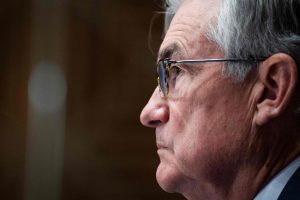'I would consider living in my car': How some Americans are impacted by inflation

New York (CNN Business)The Federal Reserve will likely hike interest rates on Wednesday, marking the end of the ultra-low rate environment the pandemic ushered in two years ago.
The market expects a quarter-percentage point to be added to the benchmark rate, lifting it above zero. It would be the first rate hike since late 2018.
The Fed hopes that higher rates will curb demand and help bring America’s soaring inflation back to a more palatable level and towards the central bank’s long-term goal of 2%.
But it’s coming at a tricky time.
Even though the US economy has been on a strong recovery path from the pandemic recession, higher energy prices as a result of Russia’s war in Ukraine are a new dark cloud on the horizon.
Hiking rates while ensuring the economy continues to expand is the latest challenge for Fed officials who have spent the past two years navigating coronavirus shutdowns and the worst labor market shock in history.
Federal Reserve Chairman Jerome Powell has warned that the war could stoke inflation and cause households to cut back on spending. But he has also indicated that the conflict has not changed the central bank’s thinking on interest rates.
“To ensure that the economy continues to expand and avoid recession, I do think that it’s important to normalize interest rates,” Moody’s Analytics chief economist Mark Zandi told the House Financial Services Committee last week.
“The key thing for lower- and middle-income households is to avoid recession,” Zandi said.
That is easier said than done. Goldman Sachs (GS) economists said last week that the chance of a recession in the United States over the next year has risen as high as 35%. The investment bank sees little to no growth during the first three months of 2022.
Lower-income households already struggling with high prices would be hit hard by a downturn.
The pandemic inflation trend began with products and services that were linked to high demand and supply chain disruption, such as cars. But higher prices soon spread throughout the economy. In the year ended in February, US consumer prices rose 7.9% without seasonal adjustments, the Bureau of Labor Statistics reported last week. It was the biggest increase since January 1982.
With prices for food and gas rising swiftly, the Fed finds itself with no choice but to act.
Source: Read Full Article
